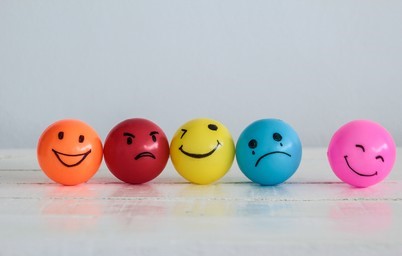 Our daily lives appear to be ruled by many emotions. We make choices based on how happy, angry, sad, bored, or annoyed we are. We pick activities and interests based on how they make us feel. We can manage life with better comfort and steadiness if we understand our emotions. An emotion is a complex psychological state that involves three distinct components: a subjective experience, a physiological response, and a behavioral or expressive response. Researchers have tried to identify and classify the different types of emotions and suggested that there are six basic emotions that are universal throughout human cultures: fear, disgust, anger, surprise, happiness, and sadness.
Our daily lives appear to be ruled by many emotions. We make choices based on how happy, angry, sad, bored, or annoyed we are. We pick activities and interests based on how they make us feel. We can manage life with better comfort and steadiness if we understand our emotions. An emotion is a complex psychological state that involves three distinct components: a subjective experience, a physiological response, and a behavioral or expressive response. Researchers have tried to identify and classify the different types of emotions and suggested that there are six basic emotions that are universal throughout human cultures: fear, disgust, anger, surprise, happiness, and sadness.
Eckman (1999) increased this list to include embarrassment, excitement, contempt, shame, pride, satisfaction, and amusement among other fundamental feelings. Robert Plutchik (1980) created the wheel of emotions, an emotion categorization system. This model illustrated how various emotions can be joined or blended in the same manner as primary colors can be used to produce new colors. Happiness vs. sadness, anger vs. fear, trust vs. disgust, and surprise vs. anticipation are the eight fundamental emotional aspects suggested by Plutchik. These feelings can then be mixed and matched to form new ones (for example, happiness + anticipation = excitement). In order to better understand what emotions are let us focus on the three essential aspects: subjective experience, physiological reaction, and behavioral response.
Researchers claim that there are a few fundamental common emotions that individuals all over the world experience regardless of their background or culture, studies also believe that emotion is extremely subjective. Consider anger, for example. Is all anger the same? Your personal feelings might vary from moderate irritation to blazing fury. While emotions like angry, sad, or joyful have broad names, your individual experience of these emotions may be far more multi-dimensional, and hence subjective. We do not always get to experience pure expressions of each emotion.
Mixed emotions are frequent in our lives as a result of various events or situations. You could feel both delighted and anxious about starting a new job. Getting married or having a kid may bring up a wide range of, emotions from happiness to fear. You could feel these feelings all at once, or you might feel them one after the other.
Physiological Reactions If you've ever felt your stomach lurch with stress or your heart palpate with panic, you know that emotions may trigger significant physiological responses. The sympathetic nervous system, a part of the autonomic nervous system, regulates many of the physiological responses you feel during an emotion, such as sweaty palms or a speeding heartbeat. The autonomic nervous system is in charge of controlling involuntary bodily functions including blood flow and digestion. Controlling the body's fight-or-flight reactions is the job of the sympathetic nervous system. When confronted with a threat, these reactions immediately prepare your body to either run or confront the situation.
Early studies of emotion physiology tended to focus on these autonomic reactions, while more recent study has focused on the brain's function in emotions. According to brain scans the amygdala, a part of the limbic system, has been found to play a key role in emotion, particularly fear. The amygdala is a small almond-shaped region associated with motivational states like hunger and thirst, as well as memory and emotion.
Brain imaging shows the amygdala is stimulated when people are given frightening images. The fear response has also been found to be reduced by damage to the amygdala. The Behavioral Response is the final component, and it is probably the one you are most familiar with: emotional expression. We invest a considerable amount of time to understand the emotions of others around us.
Our capacity to properly comprehend these expressions is linked to emotional intelligence, according to psychologists, and these expressions play a significant role in our total body language. Many expressions, such as a smile to signify happiness or a frown to indicate sadness, appear to be universal. How we express and understand emotions is also influenced by sociocultural norms.
In Japan when an authority person is present, individuals try to hide their fear or disgust. Similarly, Western cultures, such as the United States, are more prone to express unpleasant feelings both alone and in public, but eastern cultures, such as Japan, are more inclined to do so alone. In everyday language, people often use the terms emotions and moods interchangeably, but psychologists actually make distinctions between the two. How do they differ? An emotion is normally quite short-lived, but intense. Emotions are also likely to have a definite and identifiable cause. For example, you could feel upset for a brief time after arguing with a friend over politics. A mood, on the other hand, is generally less intense than an emotion but lasts longer. It might be difficult to pinpoint the exact source of a mood in many situations. For example, you could find yourself depressed for several days with no obvious cause.


